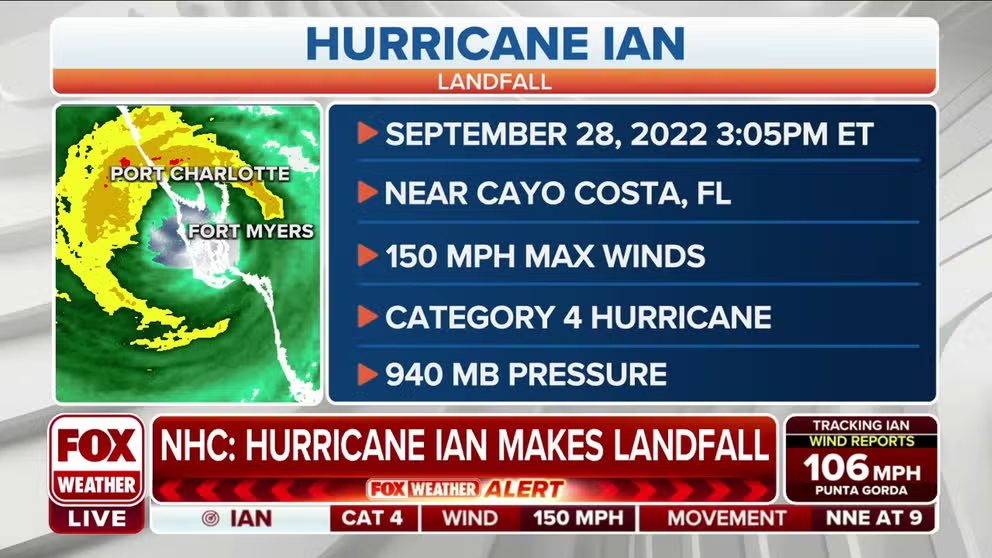Hurricane Ian ties 4th-strongest storm to make landfall in Florida
Ian came ashore with maximum winds of 150 mph, coming in just 7 mph short of a Category 5 storm on the Saffir-Simpson scale. Only three other hurricanes have hit Florida with stronger winds and a fourth has matched Ian's intensity.
Visit the FOX Weather Wire for live updates on Ian as it rips through Florida. Click here for the latest forecast, power outages and more.
FORT MYERS, Fla. – Hurricane Ian will go down as one of the strongest hurricanes ever to strike Florida as the Category 4 storm made landfall in Cayo Costa, Florida, Wednesday afternoon.
The top 5 strongest hurricanes to ever hit Florida
Along with Andrew, Michael, Charley and the Labor Day Hurricane, Ian will go down as one of the strongest hurricanes to ever make landfall in Florida.
Ian came ashore with maximum winds of 150 mph, coming in just 7 mph short of a Category 5 storm on the Saffir-Simpson scale. Punta Gorda, Florida reported a gust of 124 mph as the eye wall moved inland. The now tropical storm is forecast to make a third landfall in the Southeast later this week.
But as it stands, only three other hurricanes have hit Florida with stronger winds and a fourth has matched Ian.
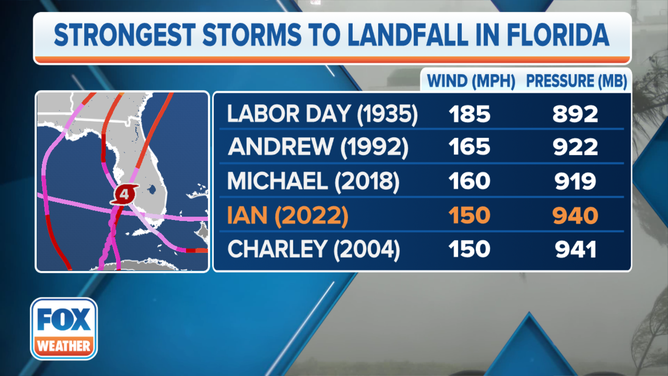
(FOX Weather)
1. Labor Day Hurricane (1935): 185 mph
Long before hurricanes were named, this monster storm known as the Labor Day Hurricane remains the strongest storm ever to hit the U.S.
HOW TO WATCH FOX WEATHER ON TV
A National Oceanic and Atmospheric Administration reanalysis of the hurricane found that maximum sustained winds of 185 mph impacted the Florida Keys on Sept. 2, 1935.
The Category 5 was blamed for killing more than 600 people and completely destroying buildings, roads and other infrastructure.
Meteorologists said the compact storm’s size helped it to rapidly strengthen in the Straits of Florida after impacting the Bahamas.
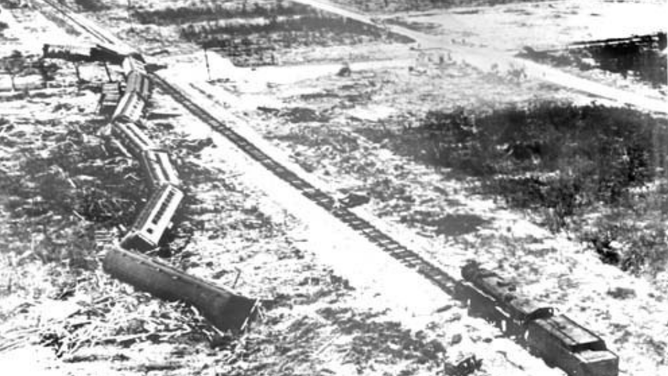
The Florida Keys railroad was destroyed by the 1935 Labor Day Hurricane.
(NOAA)
Without satellites and widespread observations, tracking the hurricane was difficult.
A hurricane warning was issued by the U.S. Weather Bureau hours before landfall, but unfortunately, the message was too late for some to take precautions.
Damage was estimated at about $6 million (equivalent to about $130 million in 2022).
2. 1992 Hurricane Andrew: 165 mph
Hurricane Andrew, one of the most infamous Category 5 hurricanes ever to strike the U.S., happened Aug. 24, 1992.
The storm was blamed for more than five dozen deaths and caused $27 billion (equivalent to more than $57 billion in 2022).
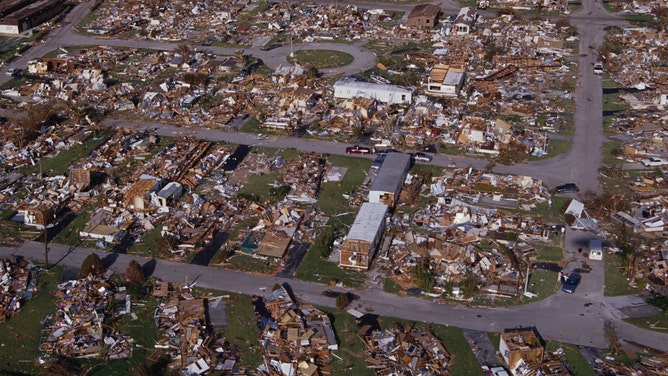
Homes were reduced to piles of rubble following Hurricane Andrew in August 1992.
(Steve Starr / CORBIS / Getty Images)
People in destroyed neighborhoods ventured out of their homes into a world they didn’t recognize, and were forced into a situation more terrifying than the storm. For the rest of that week, the nights were the worst. There was no power, no water, looters roamed the neighborhoods and gunfire echoed through the desolation. It was hell on Earth in South Dade after the storm.
A LOOK BACK ON HURRICANE ANDREW
Roads were blocked, so getting in and out of the destruction zone was hard or impossible. People got lost walking around the block because all the trees and road signs were knocked over or blown away.
Originally, Andrew was thought to be a Category 4 at landfall but after years of reanalysis, the hurricane was upgraded to a Category 5 almost a decade after landfall.
3. 2018 Hurricane Michael: 160 mph
Hurricane Michael hit the Florida Panhandle on Oct. 10, 2018.
Being well organized meant the storm brought sustained hurricane-force winds well inland across the Southeast.
During the height of the storm, before the transmission stopped, a sensor at Tyndall AFB measured a gust to 139 mph. Nearly 100% of customers across a large portion of the Florida Panhandle lost power, with some of these outages lasting weeks.
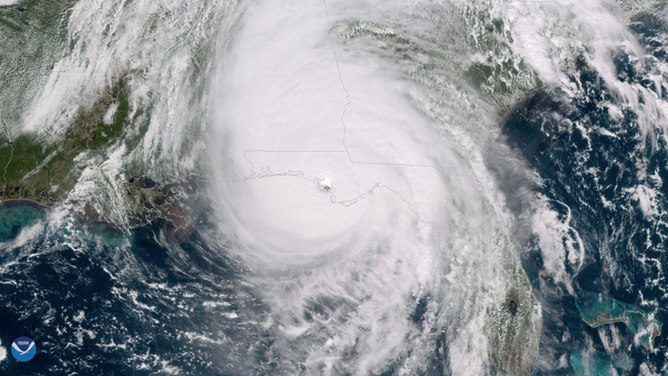
Satellite image of Hurricane Michael making landfall in Florida in Oct. 2018.
(NOAA)
The combination of rain, surge and winds caused an estimated $25.5 billion in damage (equivalent to more than $30.0 billion in 2022).
The storm caused catastrophic damage from wind and storm surge, particularly in the area stretching from Panama City Beach to Mexico Beach to Cape San Blas, according to the National Weather Service. The widespread damage spread well inland as Hurricane Michael remained at hurricane strength into southwest Georgia.
At St. Joseph Peninsula State Park on Cape San Blas, the storm surge cut through the peninsula, creating two inlets, resulting in portions of the park no longer being accessible by vehicle, according to the NWS. "These new inlets truly demonstrate the power of storm surge," NWS wrote.
Hurricane Michael brought catastrophic storm surge to the Florida Panhandle and Big Bend areas. One of the hardest hit locations was from Mexico Beach to Indian Pass where 9 to 14 feet of peak storm surge inundation was observed. In addition, wave action caused even higher total water values and this resulted in waves destroying the second story of multiple buildings in Mexico Beach.
4. (Tie) 2004 Hurricane Charley: 150 mph
Hurricane Charley made landfall in nearly the exact same spot as Hurricane Ian – near Cayo Costa, Florida, on Aug. 13, 2004.
Charley rapidly intensified as it approached the Florida coast into its 150 mph monster Category 4, but a relatively small eye kept the most damaging winds close to the storm center.
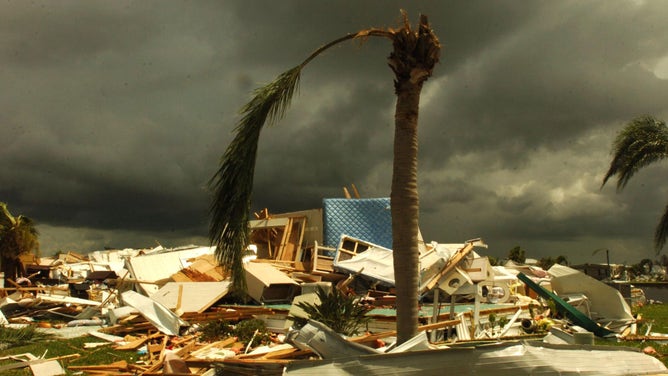
A shredded palm tree stands among rubble in Punta Gorda, Florida, Saturday, Aug. 14, 2004, after Hurricane Charley passed through the night before.
(Gary W. Green/Orlando Sentinel/Tribune News Service / Getty Images)
Still, there were 10 direct fatalities in the U.S. associated with Charley, according to the National Weather Service, and preliminary estimates of the total damage and economic loss were $14 billion.
Charley was the third-costliest hurricane in the U.S. behind Katrina (August 2005) and Andrew (August 1992).
Hurricane Ian makes landfall in southwestern Florida as Category 4 storm
Hurricane Ian has made landfall in southwestern Florida as a Category 4 storm.
Hurricane Ian in 8-way tie for 5th-strongest U.S. hurricane
While Ian will tie for 4th strongest in Florida, overall in the U.S. it ties for fifth-strongest, but it has a lot of company.
Six other hurricanes besides Ian and Charley have hit the U.S. with winds of 150 mph including Hurricane Ida and Hurricane Laura.

